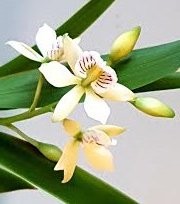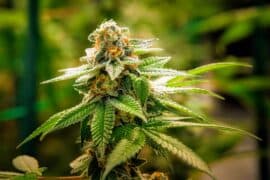Prosthechea sima
(Prosthechea sima)

Description
Prosthechea is a genus of flowering plants in the orchid family (Orchidaceae). The name is derived from the Greek word prostheke (appendix), referring to the appendage on the back of the column. Appendage orchid is a common name for this genus.The roots of all Prosthechea species possess a velamen (a thick sponge-like covering) differentiated into epivelamen and endovelamen. Flavonoid crystals were observed in both the roots and leaves. The erect stems form flattened or thickened pseudobulbs. There are 1 to 3 terminal, sessile leaves. The leathery blade is ovate to lanceolate. (Euchile leaves are softer and thinner than other Prosthechea leaves.) The flowers form an apical, paniculate raceme with a spathe at the base of the inflorescence. There is a great variety in the flowers of this genus. They may be attached to the stem by a peduncle or they may be sessile. They can flower on the raceme at the same time or successively. They can be resupinate or non-resupinate (as in Prosthechea cochleata). Prosthechea flowers are unique among the Laeliinae in producing fluorescent flavenoid crystals when preserved in ethanol with 5% sodium hydroxide. The sepals are almost equal in length, while the petals can be much slender. The lip is pressed closely (adnate to proximal) to half of the column and shows a callus (a stiff protuberance). The column is 3- to 5-toothed at its top. This is a neotropical epiphytic genus, widespread across much of Latin America from Mexico to Paraguay, as well as in Florida and the West Indies.
Taxonomic tree:







